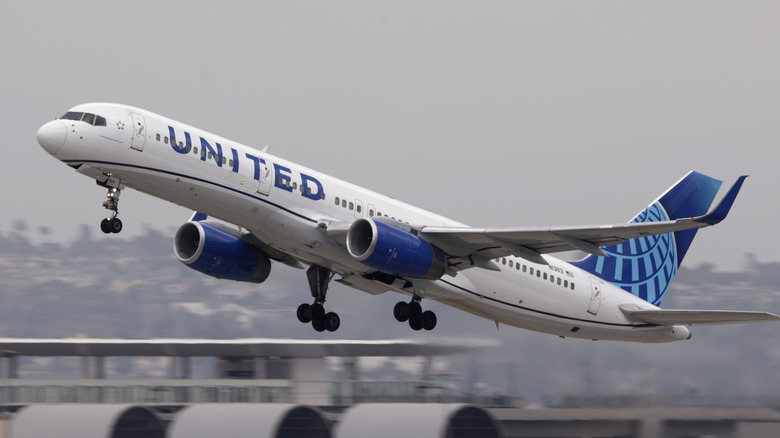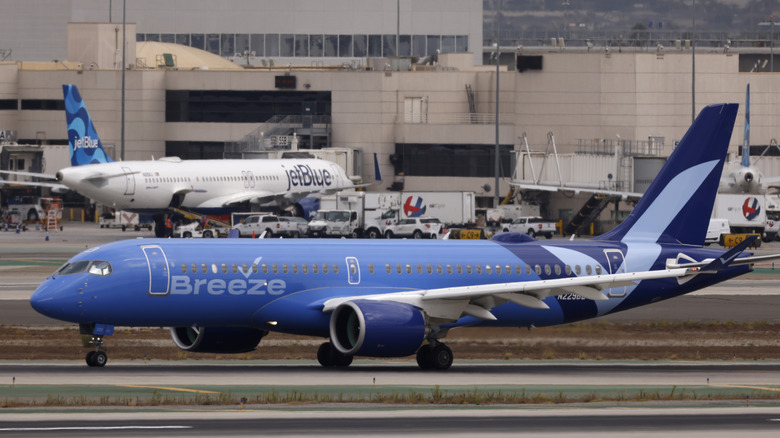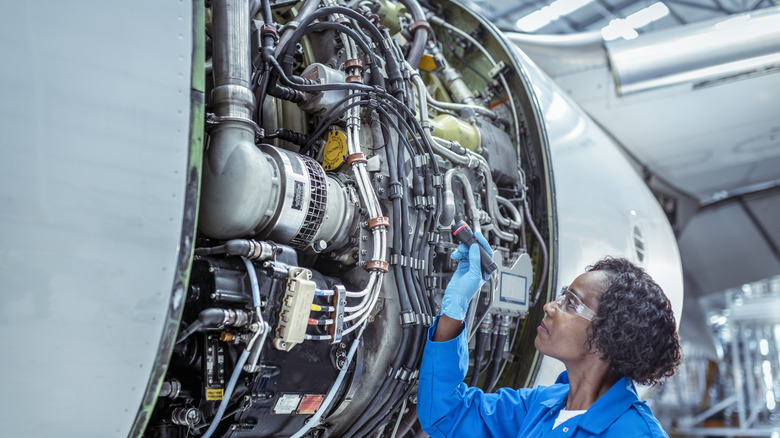Why Some US Airlines Prefer To Fly Older, Used Planes To New Models
American commercial aviation is a vibrant industry, with a good mix of legacy carriers like United and Delta, and budget carriers like Spirit and Frontier. Old and used planes, which are surprisingly usable even after heavy usage, make a huge chunk of the fleets for various carriers. While you may think budget carriers would primarily be the ones flying older planes to cut costs, it is actually the other way around in many cases.
United currently holds the oldest airplane fleet in the U.S. with a median age of 19.4 years. Around 49 percent of United's fleet is over 20 years old, while only 19 percent of it is 5 years or younger. Sun Country Airlines and Allegiant are next on the list with a median fleet age of 18.1 and 17.6 years, respectively. In contrast, budget airlines like Breeze, Frontier, and Spirit have some of the youngest airplane fleets in the U.S. While United's fleet is eligible to vote and hold a driver's license averaging 19 years in human terms, Breeze's fleet is still a toddler with a median age of just 2.1 years.
So, why do some airlines prefer flying old airplanes, despite their downsides while the budget airlines, typically associated with extreme cost-cutting measures, fly the latest jets? The answer lies in how frequently airlines plan to fly their planes. Budget airlines operate their planes far more frequently, meaning the improved fuel efficiency and lower maintenance costs for newer jets quickly add up.
Fleet age depends on airline strategy
Old and used planes are much cheaper to buy as compared to upgrading to a new jet, however, they come with a few disadvantages. A major disadvantage of buying or using an old airplane is the high fuel cost. Newer jets are often much better at optimizing their fuel usage and can significantly reduce fuel costs. Additionally, older planes are often expensive to maintain as compared to a more recent jet. That said, airlines often buy used planes, often from other airlines, to fulfil demand. Delta has been a carrier that frequently buys old planes and recently bought 33 737s from Indonesian carrier Lion Air, to add to its fleet.
Budget airlines that mostly travel shorter routes prefer flying newer airplanes to reduce fuel costs, as these can be passed to the passenger in the form of low fares. Airlines like Breeze and Spirit bear hundreds of millions in ownership costs of newer jets, with a strategy of flying their planes frequently enough (another reason why budget airlines can price their tickets low) to benefit from the lower fuel costs. These airlines often fly planes from similar families to further minimize the maintenance and infrastructure costs.
Legacy carriers such as Delta and United prefer having a mix of older and newer planes in their fleet. As these airlines don't need to fly their planes as frequently as budget carriers do (due to a large and varied fleet), lower fuel costs aren't that big a deal. This allows legacy carriers greater flexibility with operations, allowing them to even park their planes without losing a ton of money when the demand is low. Additionally, carriers that immediately need to fulfill demand and can't wait for the delivery of newer planes may also buy old planes.
Old does not mean unsafe
While United's fleet has a median age of 19.4 years, more than 200 of its planes are 25 years or older. Common automobiles, such as cars and trucks, degrade significantly when they become old, so how does an airplane that simply can't afford to fail midair remain usable after years of flying.
The lifespan of an airplane depends on the flying hours and the cycles it completes. A cycle can be the number of flights for smaller planes and the number of times the cabin has been pressurized and depressurized on larger planes. The FAA requires airlines to frequently maintain their fleet based on the number of cycles and flying hours. Sometimes, airlines are required to replace parts even if they are operable to ensure airplane safety. Ironically, the same FAA still uses floppy disks to manage flights.
Planes that fly long distance international routes typically complete fewer cycles, making them last longer (in terms of years) than shorter domestic flyers. It is also a reason why budget airlines flying domestic routes avoid older airplanes because they often require expensive maintenance due to frequent flying cycles.


